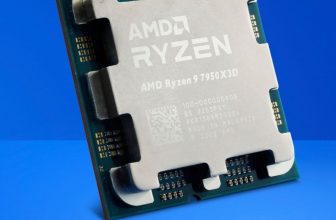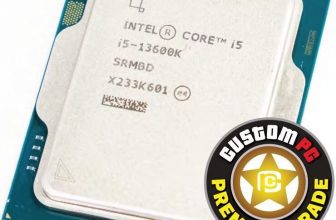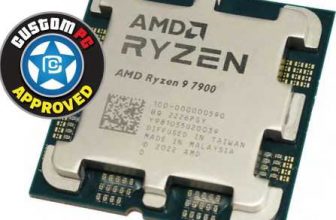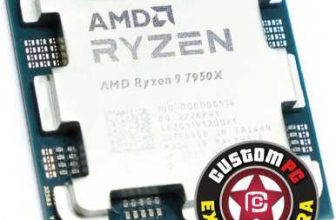Intel Core i3-6100 Review
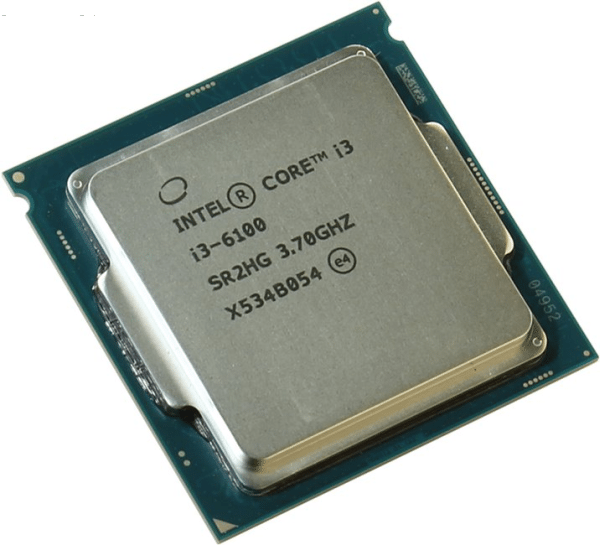

Apart from the odd surprise such as the Haswell-based, multiplier-unlocked Pentium G3258, Intel’s CPU offerings have been consistent in terms of overclocking abilities for a number of years. We usually get two K-series models per quad-core generation that are multiplier-unlocked – a Core i5 and Core i7, with a raft of non-K-series CPUs ranging from Core i7s all the way down to Pentiums. The Core i3-6100, then, appears to be a fairly run-of-the-mill offering for a £100 Intel CPU, except it now has one advantage that Intel is desperately trying to keep quiet – base clock overclocking.
Late last year, it was revealed that a number of motherboard manufacturers had found a way to allow base clocks that were much higher than previous maximums, partly due to the fact that Skylake’s architecture allows for it, but also thanks to a few tricks from the motherboard manufacturers themselves. In short, base clocks in excess of 120MHz have now been achieved quite easily following BIOS updates, which means that CPUs such as the Core i3-6100 no longer languish at 3.7GHz, but can be overclocked to nearer 4.5GHz.
This is a huge deal for several reasons. The Core i3-6100 might only be a dual-core CPU, but it supports Hyper-Threading, so it can execute four threads simultaneously, compared to the Pentium G3258’s two, giving it an advantage in multi-threaded software.
Also, you can enable base clock overclocking on a budget Z170 board, so it’s possible to build a fairly potent system and get plenty of change from £200 when you buy the CPU and motherboard.
However, there are a few catches. For a start, overclocking the base clock in this way disables the on-board GPU as well as all of the CPU’s power-saving functions of the CPU. In fact, the CPU is also forced to run at full speed all the time, which will lead to extra power consumption. For most enthusiasts, though, losing the on-board GPU isn’t likely to be an issue, and the Skylake architecture is already very powerefficient, so the power consumption isn’t likely to increase by a significant amount anyway.
Of course, Intel may well patch this bug in future revisions of its CPUs or force manufacturers to do it themselves via a BIOS update. However, buying the kit now means you’re effectively immune to any subsequent patching.
With all that out the way, though, what’s the Core i3-6100 like as a CPU on its own? It has a maximum stock frequency of 3.7GHz, which is 500MHz higher than the more power-frugal Core i3-6100T we used in our recent HTPC but, more crucially, it has a much higher multiplier (37x on the 6100 compared to 32x on the 6100T). As such, the 6100 is better suited to base clock overclocking, especially when budget Z170 boards may not be able to run the base clock much quicker than 120MHz.
Both CPUs have 3MB of L3 cache and lack Turbo Boost, plus they each use Intel HD Graphics 530. Again, to get its lower TDP of 35W compared to the Core i3-6100, the Core i3-6100T has a reduced GPU frequency too – 950MHz compared to 1.05GHz, although this will only matter if you’re not using a discrete GPU. As with all Skylake CPUs, the Core i3-6100 is also fabricated using a 14nm manufacturing process.
There are also several other Core i3 Skylake CPUs with slightly higher multipliers; the Core i3-6300 and Core i3-6320 are clocked at 3.8GHz and 3.9GHz respectively, but cost £116 and £126 too. As such, if you’re on a very tight budget, the £93 Core i3-6100 is where you’ll find the sweet spot in terms of bang per buck.
At stock speed, the Core i3-6100 made short work of AMD’s similarly priced A10-7870K APU and even gave the 6-core £170 AMD FX-8370E a run for its money in most of the media benchmarks, although the APU obviously has the benefit of a proper GPU. Only thanks to a monster score in the video encoding test was the AMD FX-8370E able to beat the i3-6100. The AMD A10-7870K and Pentium G3258 were far inferior, though, in every single test.
We then overclocked the Core i3-6100 using a new BIOS for our ASRock Z170 Extreme4 test motherboard, but these BIOS updates are freely available for most current Z170 boards. We hit 4.4GHz using a base clock of 119MHz and a 1.375V vcore, which was enough to pummel the A10-7870K and Pentium G3258 again, despite them also being overclocked. However, despite the inclusion of Hyper-Threading, it still wasn’t enough to get close to any of the quad-core or 6-core CPUs on test in the multi-threaded video encoding test. When overclocked, the 6100 managed to surpass the FX-8370E’s stock speed system score, but only just.
Amazingly, even when overclocked, the Core i3-6100 test system only drew 81W under load in Prime95. While we used a different GPU and motherboard when we reviewed the FX-8370E, the difference in power consumption as a result would be minimal. The latter’s power consumption of 284W, then, is a stark reminder of the inefficiency of AMD’s current CPUs, especially as the Core i3-6100 bettered it overall once overclocked.
Whether or not you’ll be overclocking it, the Core i3-6100 offers compelling reasons to choose it over both its Intel and AMD counterparts. It has much lower power consumption than most similar AMD CPUs and APUs, and runs rings around most of them in many of our benchmarks. The only reason to consider an AMD APU now is for its GPU performance. The case for opting for a cheap Skylake system is fairly persuasive if you’re on a budget though – you wouldn’t save much by taking the Haswell route as an alternative, as the memory and motherboard prices between the two platforms are now roughly aligned.
The main reason we’re most excited about the Core i3-6100 is the ability, for the moment at least, to overclock it. Netting an extra 700-800MHz for free is a huge deal, although we suspect Intel is more concerned about the impact of base clock overclocking on its non K-series Core i5 and i7 CPUs than its Core i3 chips. Even so, if you’re looking to build a super-budget system and plan on overclocking it, pairing a Core i3-6100 with a cheap BIOS-updated Z170 motherboard that supports base clock overclocking is currently your best option. ANTONY LEATHER
VERDICTA good CPU as standard, but the fact you can currently overclock it makes it a bargain that’s ideal for building a budget gaming rig.
SPECIFICATIONSFrequency 3.7GHzCore SkylakePackaging LGA1151Manufacturing process 14nmNumber of cores 2 x physical (4 threads)Cache L1: 4x 32KB, L2 2 x 256KB, L3 3MB (shared)Memory controller Dual-channel DDR3L, DDR4, up to 2133MHzFeatures SSE, SSE2, SSE3, SSSE3, SSE4, SSE4.2, AES, AVX, AVX2, EM64T, F16C, Quick Sync Video






